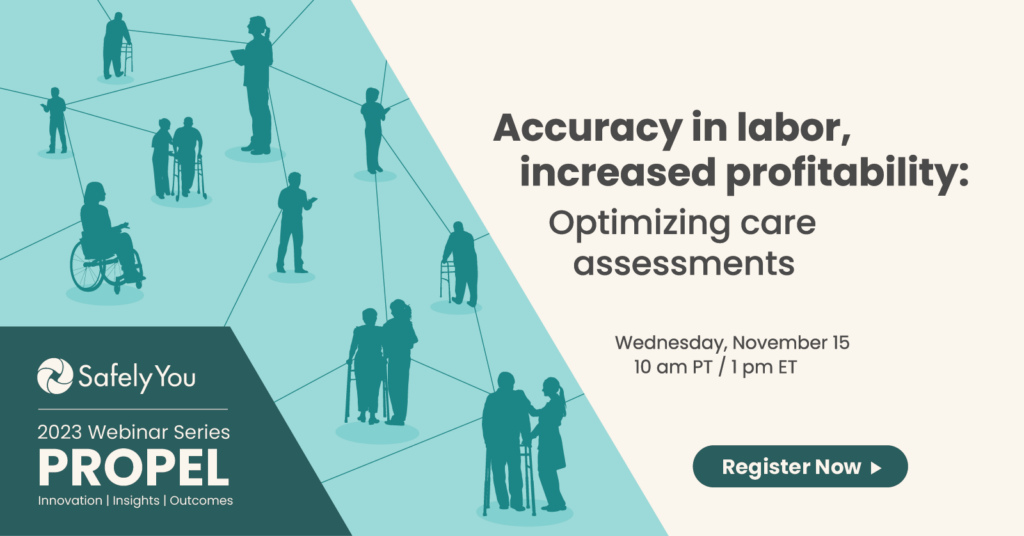Adults living with dementia fall four times per year on average — nearly twice as often as those without dementia. These falls often happen in memory care communities when a resident tries to move without help from a wheelchair to a chair or bed or from a sitting to a standing position. When residents are assisted with transfers, they only fall 1% of the time.
Fall Risk Factors
Let’s take a closer look at the contributing factors leading to these falls:
-
- Fatigue: Walking or self-propelling with a wheelchair to get to the desired location can be tiring for many.
- Time of day: A resident may have been sleeping and is drowsy, or the room could be dark, which is impairing their ability to gauge distance, location of walker, etc.
- Overestimate abilities: Residents may overestimate their ability to self-transfer safely; their abilities also may change from day to day.
- Mobility aid position: The aid may not be placed in the most accessible position, or it is completely out of reach.
- Mobility aid unlocked: An unlocked aid can easily move away from a resident as they attempt to transfer.
- Improper mobility aid: Residents may not have the best fitting and/or most appropriate mobility aid for their current status.
Reduce Transfer Risks and Prevent Falls with Interventions
Now that we understand the most common risk factors, what are the best solutions for preventing transfer falls?
-
- Modify wheelchair: Add anti roll-back system to wheelchairs.
- Transfer aids: Provide transfer poles, bed canes, or halos to assist residents with transfers. A hospital bed with a half rail should be considered as a safety measure as well.
- Establish transfer technique policy: It is crucial to have 100% staff compliance on your community’s policy for proper transfer techniques, such as using gait belts when appropriate and transfer equipment when applicable (i.e. hoyer, sit-to-stand device, etc.) .
- Training: There can never be enough training, so train and re-train the care staff on transfer techniques on a regular basis.
- Physical/Occupational Therapy: Leverage therapy referrals regularly to ensure residents have the appropriate mobility aids and transfer assistance for their changing condition.
Success Stories
The proposed solutions may seem simple, but they are very effective. In fact, a resident was seen falling while self-transferring from a wheelchair to bed in a memory care community. The care staff added an anti roll-back system to the wheelchair and also requested therapy for the resident. In two short weeks since these measures were put in place, the resident has not fallen.
Another example highlights the importance of training and technique. A resident’s daughter was seen in video transferring her father from his wheelchair to bed. Her lack of training ended up causing her father to fall to the ground. The care staff used video to demonstrate to the daughter that she needs to request assistance prior to a transfer. They also used the opportunity to encourage the daughter to assist in de-cluttering her father’s room to further remove potential fall hazards.
To learn more fall prevention tips, download SafelyYou’s whitepaper, Best Practices for Fall Prevention.





